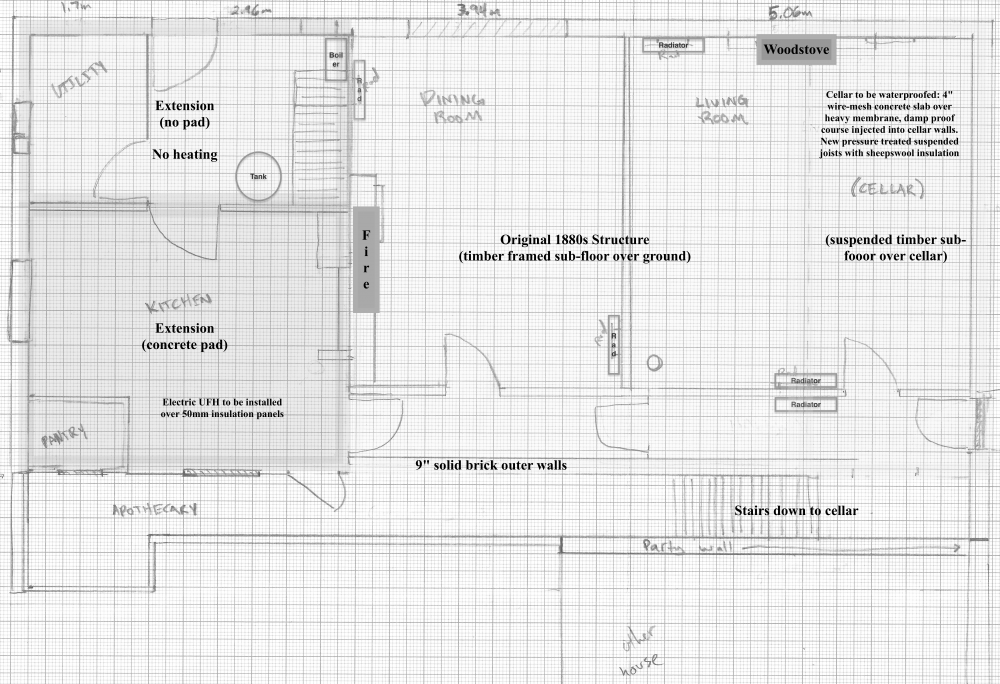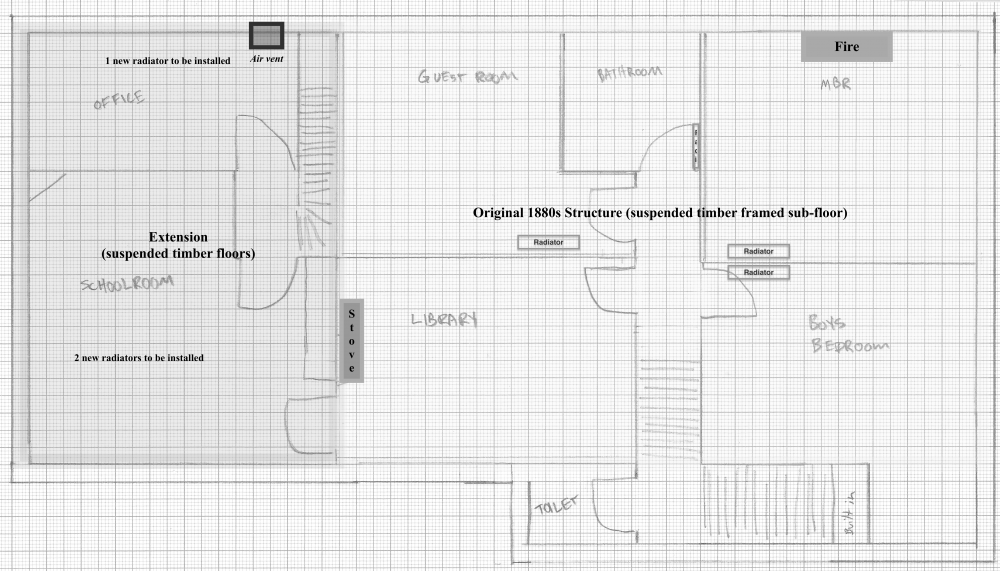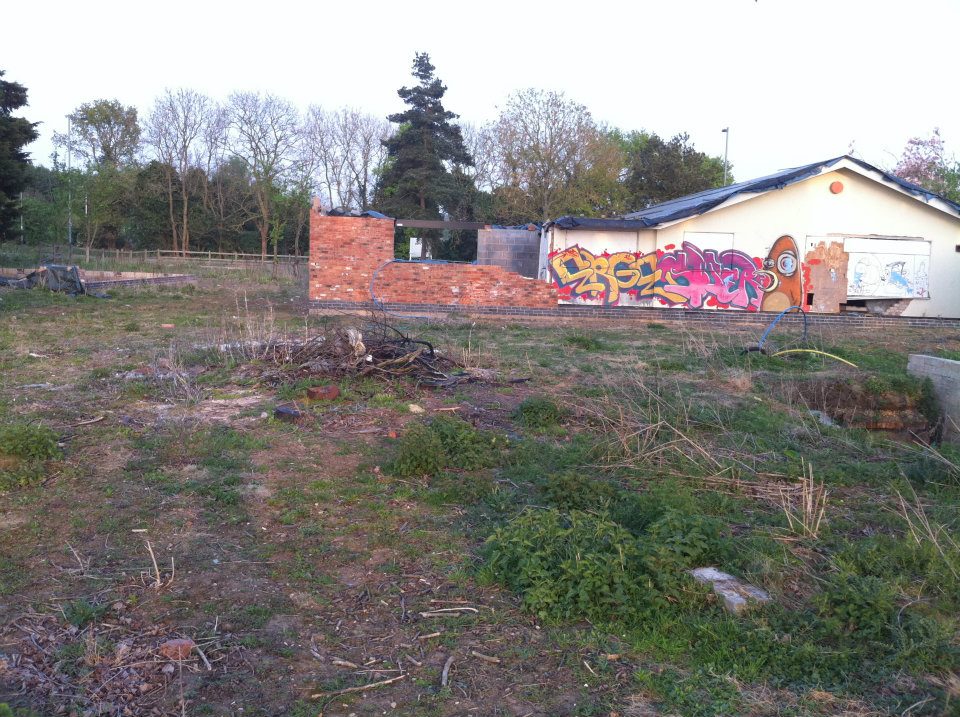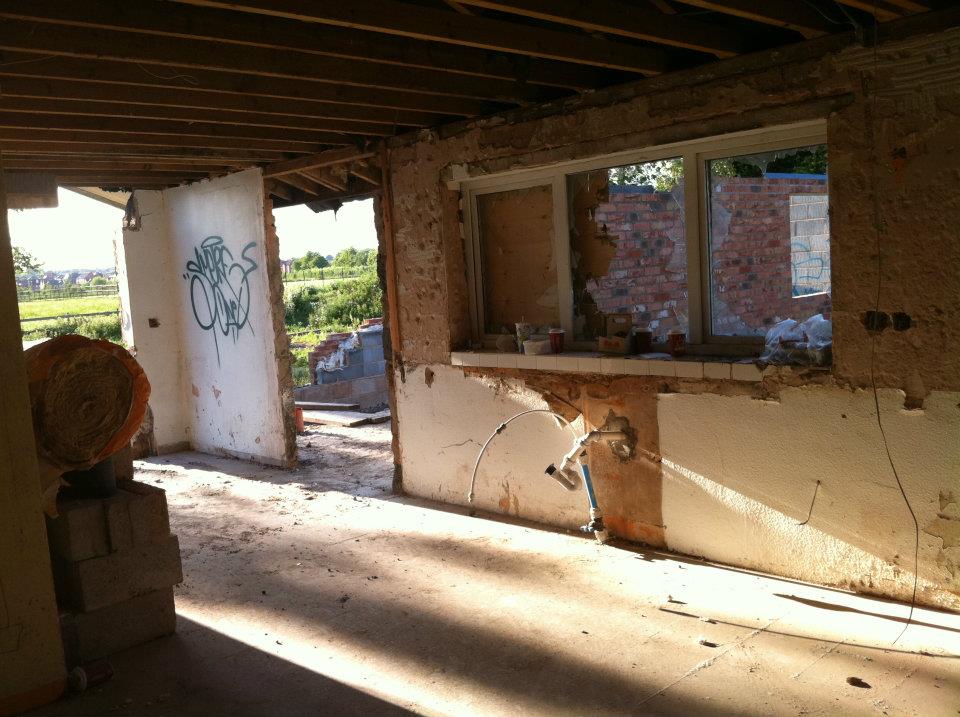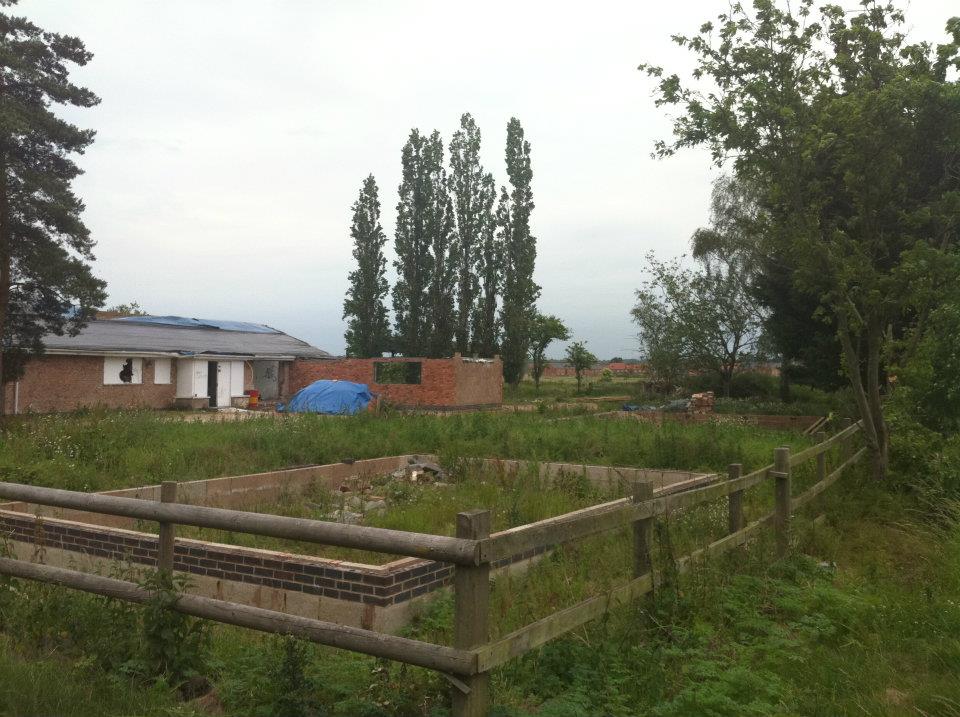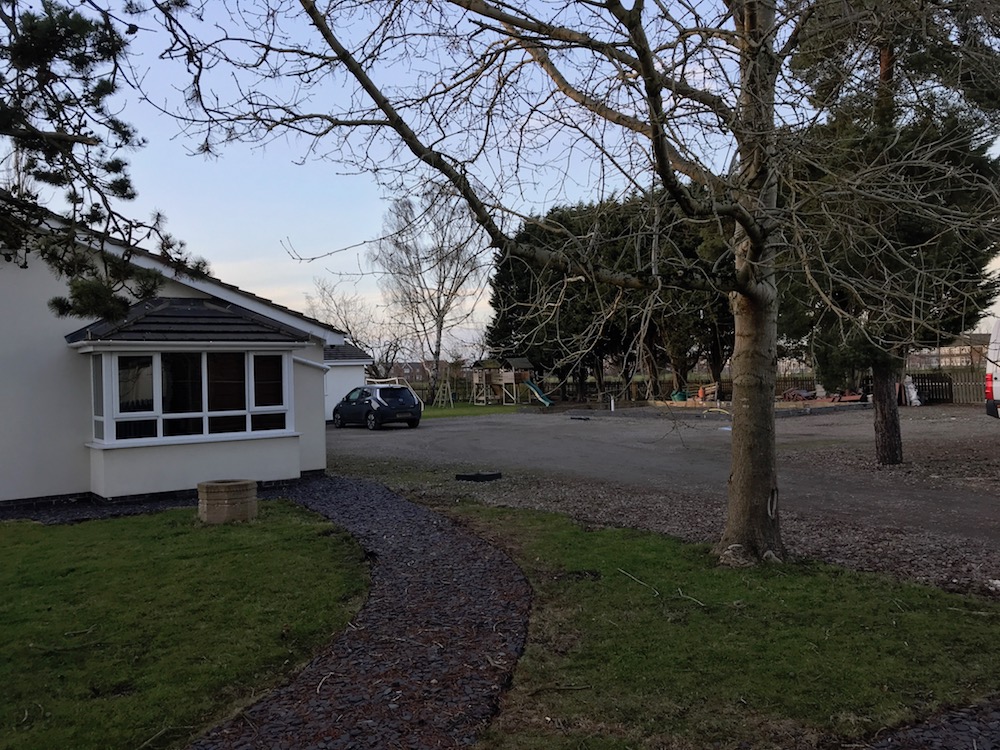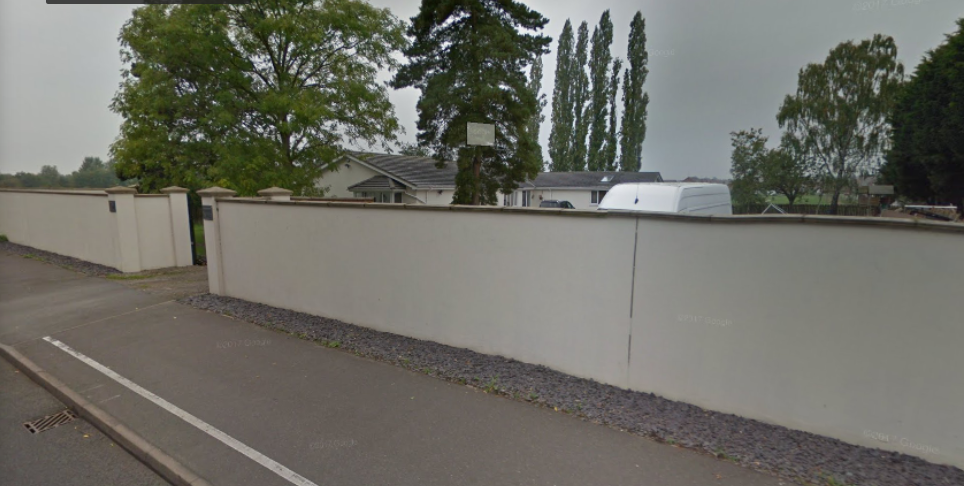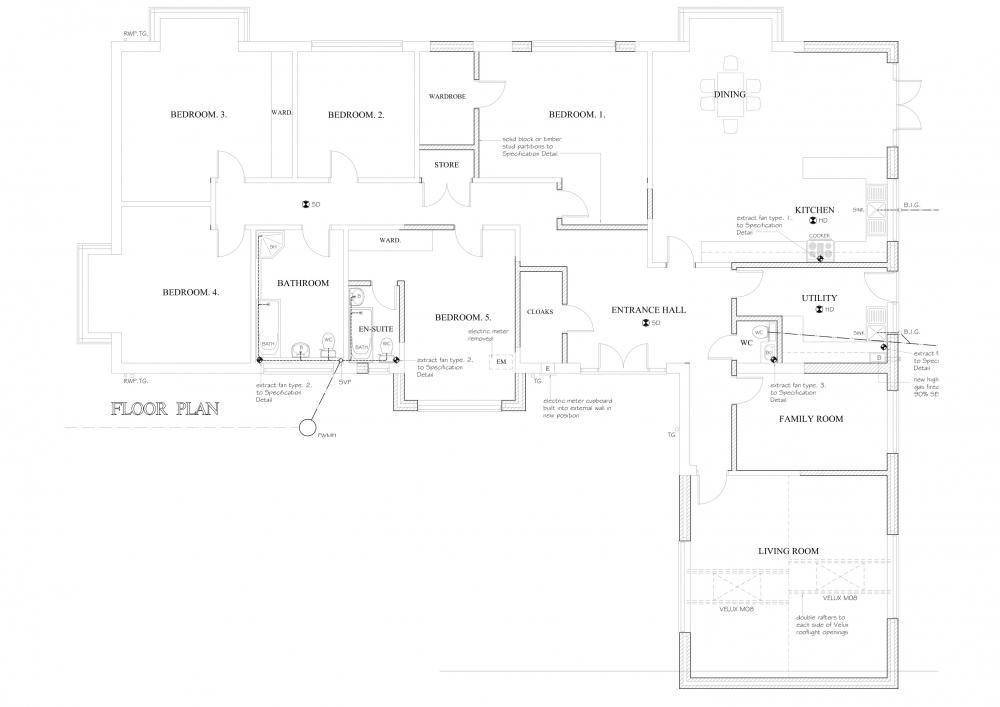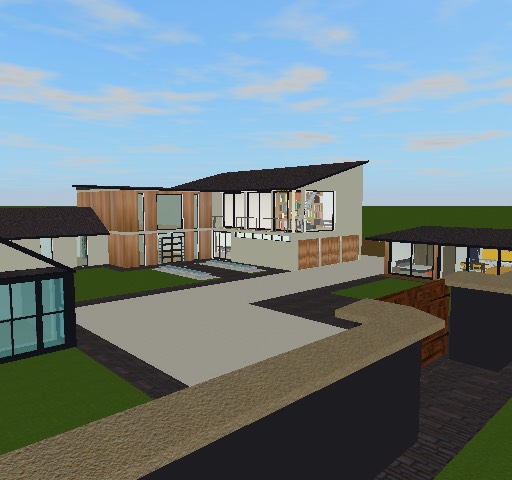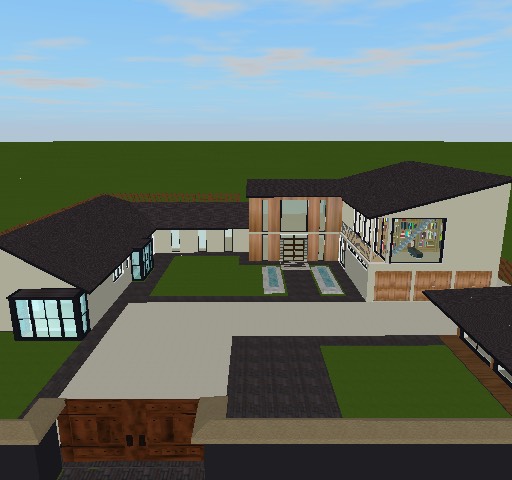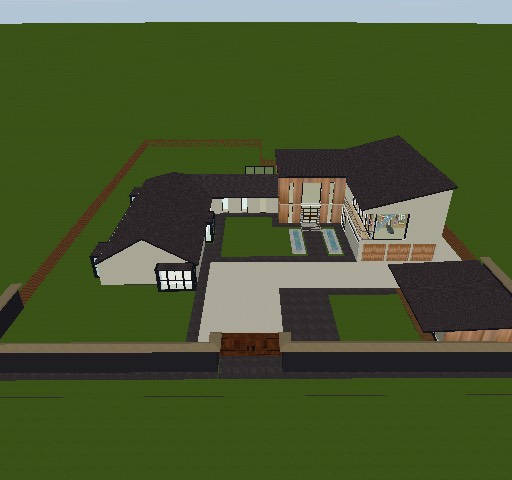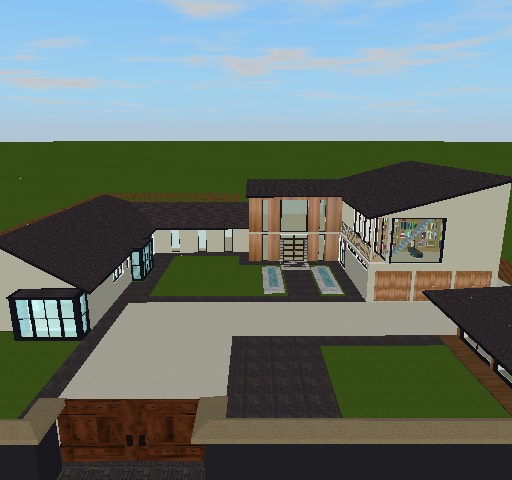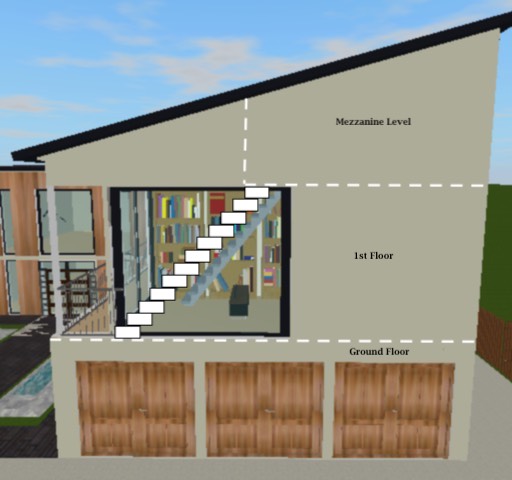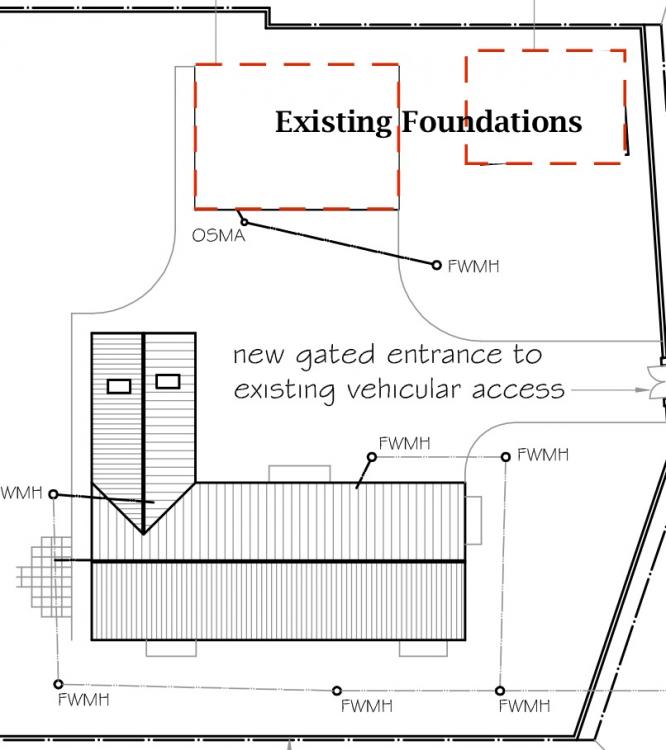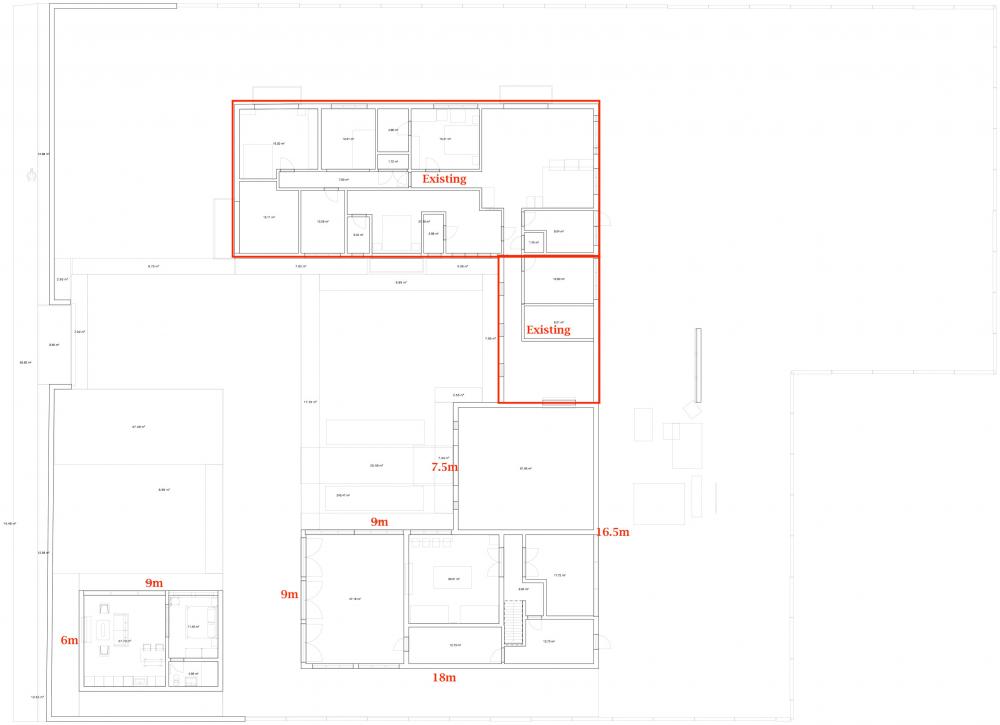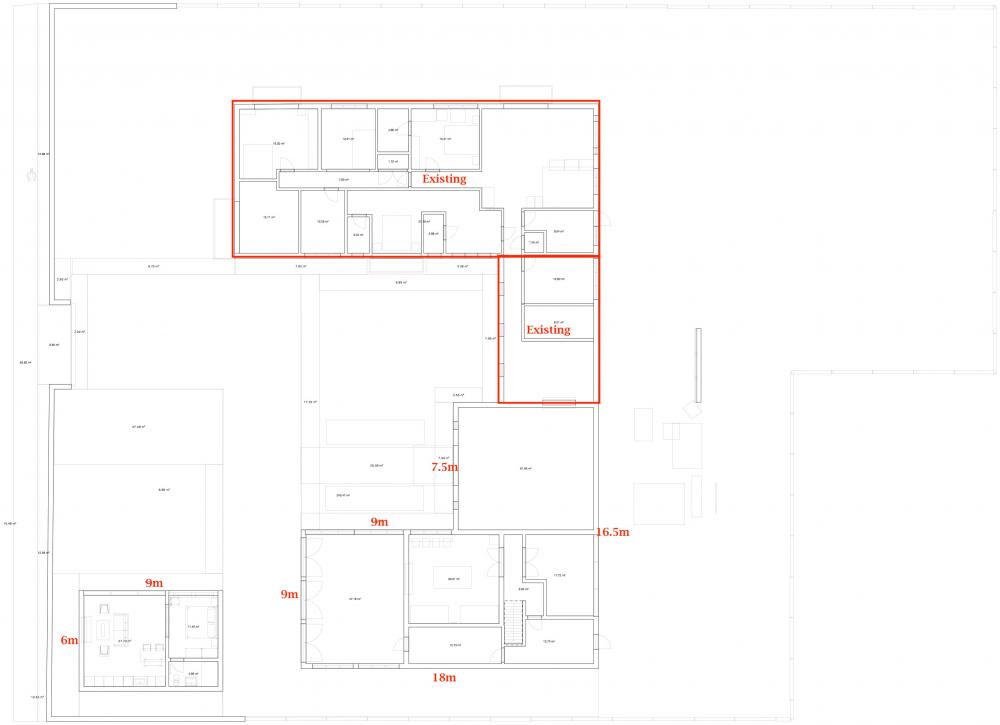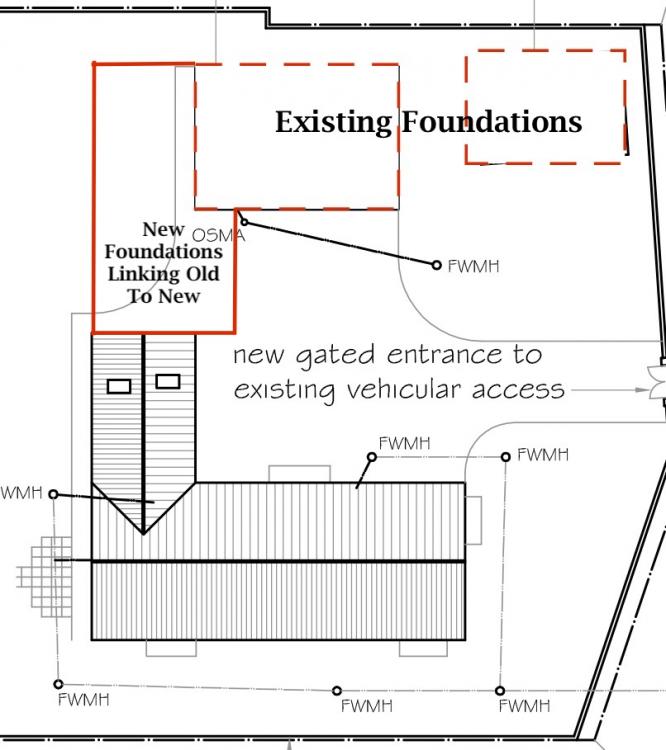Search the Community
Showing results for tags 'renovation'.
-
Hi all 👋🏼, I wanted to introduce myself and our project as I anticipate I'll be in hot pursuit of the forums thoughts, opinions and experiences in the forthcoming months. We purchased a 3-bedroom 1970's bungalow in August 2022 but had some planing complications due to a parish council policy that attempted to dictate that "a bungalow must stay a bungalow". 15 months later our planning application was finally granted, albeit with some compromises. Here's a few points on what we're attempting... Replace existing roof (& ceilings) entirely, building up the walls ~80cm, adding a new roof with 1.2m increased ridge height and steeper pitch Upstairs will accomodate two bedrooms, bathroom and "breakout area" overlooking hallway void Large single-storey flat roof side and back extension out to locate 65sqm kitchen/diner Complete re-configuration of downstairs layout Complete replacement of heating system (gas will be cut off entirely) New ASHP (current thinking Valliant Arotherm Plus, one-zone, no buffer) UFH all-round on ground floor (retrofit lo-profile UFH on top of the existing slab (Wunda?), insulated/screeded in new extension). Possibly fan convectors in bed-rooms upstairs Complete rewire I would assume MVHR (current thinking is a radial system installed through new posi-joists, manufacturer TBH but will get BCF to design) New solar panels, and battery (current thinking GivEnergy to unlock Octopus Intelligent Flux) New double-glazing all round (Residence R7 probably) also 2.7m high, ~8m wide sliding doors at rear (either Corteso Cor-vision or Minima) The biggest grey-area for us at the moment is how much to focus on/invest in improving the insulation and air-tightness of the existing exterior walls. I'll raise a separate thread for this in due course. Fortunately we were able to leverage a second mortgage and keep our existing home so we don't intend to live in the place whilst the majority of the work is taking place. The properties are only 0.5 mile apart so I am hoping I'll be able to keep a close eye on the build whilst I work from home. We are also intending to do a little of the work our-selves as possible (i.e. fitting MVHR, UFH, painting & decorating, airtightness membrane?, etc). Thanks for having me and in advance for any advice, Ollie Fleet, Hampshire Plans 24 OD - Amendments Combined.pdf Concept Images Existing Images
-
Afternoon all, I've been browsing the forums for a while, messaged a few users direct but as we are fast approaching water tight I'm after a steer from the group on all things plumbing...... Attached are a couple of pictures of what will be the finished ground and first floor plans. The existing house is/was heated using a warm air boiler (located in what will become a snug) ducting through floor to ground floor rooms and into the loft and into 1st floor via ceilings. hot water was previously provided by an electric hot water cylinder (i know $$$) located on the first floor. (Cold Water tank in the loft) Mains gas and water come into the house in the snug (it used to be the kitchen). The intention is to re-route the mains water/gas to a plant room accessed off the garage which will house new System Boiler Unvented Cylinder Water Softener Heating will be provided by radiators in bedrooms, snug, study (8 Rads) towel radiators in bathrooms/ensuite (4 Rads) underfloor heating in open plan kitchen/living room and porch This will be a completely new plumbing system with all existing plumbing decommissioned as the job goes on as we are still living in the house as while work progresses. The first floor joists run side to side (across the front) of the house, except the rear extension which runs front to back. Up until last week I was intent on using a branch/tee plumbing system for the hot water and central heating (because that's what I was familiar with) but I then realised how much more common the manifold systems have become. I've plumbed in plastic before when renovating our last house and I like the idea of using a manifold system because it gives a continuous run of pipe to the appliance/rad (reducing scope for leaky fittings at junctions/turns etc) but I also note the issues with having to empty fairly long sections of pipe before it receives hot water, to give an idea of scale the house is about 12m wide 14m deep. In terms of design my questions to you lovely people would be, should I Use one manifold in the plant room to serve CH pipe runs to all rads and towel rails and secondary manifolds serving the UFH? In respect of DHW and CW run a feed to each bathroom and install a manifold in each bathroom (therefore a using a shower means a significantly shorter length of pipe needs to be vacated for the sink hot tap)? Is running a manifold off another manifold a no, no in terms of maintaining consistent water pressure etc? In terms of manifolds etc, I'm familiar with 15mm, 22mm etc. but I'm seeing reference to 10mm, 16mm across some brands. Is there a preferred brand of pipe, manifold etc. you would recommend? I'll probably have more questions as we go on but I am actively scouting threads looking for answers etc. so thank you in advance for all the contributions
-
- renovation
- manifolds
- (and 10 more)
-
We bought the bungalow in 2018 to move my elderly parents closer to us following Mum's stroke. While she recovered, they needed help most days, i was spending a lot of time travelling back and forward so it made sense to move them closer. As they lived in Windsor, we could not afford to move that way and I was very suprised when they agreed to our suggestion to move closesr to us. But it has proved very valuable in the years since. I think we were very lucky in that when we started looking, this property was up for sale. Its a 15 min drive for me but not too close. The layout was workable and it came with a garage, workshop and a large garden, mostly on the outside, wrapping round the corner plot. And it was perfect fo a Motorhome, which we'd be wanting for years but had nowhere to keep it. 😃 Our first change was to add a shower room as they both struggle to get in and out of a bath. We had a good builder, Patrick, who we had used on our previous renovation (Scooby Cottage) though we did have to wait nearly a year before he could start work. Having the shower room made a big difference to them and as we had applied for planning permission, we had a free shot at another for 6 months. So i drew up plans for an extension to the kitchen, as it is not very large with only a small amount of worktop. After receiving pp, we decided that the parents would not cope with the disruption so left it. But now we are looking to the future and what we can do. In the long term, when parents no longer need it, we want to extend the kitchen and across the back, to give a larger open plan space, and move in ourselves. Selling our current house to pay for the renovation. We dont need a lot of space and the bedrooms are fine, we'd use one and convert the other into a dressing/storage room. But after wanting to build a Passivhaus for years, and hearing about the benefits of living in such from many on here, I am hoping we can renovate to a good enough standard to give us a warm, low energy, home without any draughts. So thats the plan! I hope you'll enjoy the 'journey' as we progress through the renovation. Next time - Using an Architect firm. 🤔
-
- bungalow
- renovation
-
(and 1 more)
Tagged with:
-
I'm looking for some advice on floating floor construction build up. As part of a renovation project for our ~1990's built home, I want to insulate the ~70 m2 ground floor which is currently of uninsulated beam and block construction with a vented cavity. We are constrained on height of materials that can be added on top of the beam and block, mostly to match existing finished floor level at the bottom of the hallway staircase, but also to avoid shrinking the ceiling height (currently ~2.4 m above finished floor level). So far, it seems like a ply (or other floorboard) sub floor floated on phenolic foam insulation panels will give best combination of thermal resistance, stack height, and cost. We would then add floor coverings, likely all vinyl tile with one room carpeted. I've added a sketch of the proposed build up. I'm looking at using Kingspan K103 which has a compressive strength of 120 kPa at 10% compression. The main questions I have are: Is 18 mm ply going to be rigid enough to avoid deflections / point loads being transferred to the insulation panels? Do we need battens anywhere? So far thinking adding these in doorways, under kitchen units, and for bathroom fittings. IS it necessary to factor in a 6mm ply layer on top as a "sacrificial" covering in case we go with glue down vinyl? Should this be fixed with screws? Interested in thoughts on these points, and anything else I might be missing. If there are any general guides to floating floor construction would appreciate the share.
- 5 replies
-
- kingspan
- floating floor
-
(and 3 more)
Tagged with:
-
Morning All, Still in the ideas / planning / financial posibilities phase on a potential project in the Lake District. Background: My grandmother will be 100 this year and as much as we wish otherwise will not likely be with us much longer so as part of future planning we're trying to work out what best to do with her property when the time comes. The house while not huge at 3/4 bedroom has significant value due to the location overlooking Grasmere lake. However, it has had no real improvements in the last 30 years so will be in need of a complete renovation which will likely involve significant costs. As the property will be split between family members I've got to work out if it is possible to get a large enough mortagage to buy out the others, cover the cost of renovations and whether it is finacially prudent. The side effect of the spectacular location and views is the exceptional access difficulty. The property is right at the end of a shared narrow road on a reasonable incline but finishes up with a sharp 90 degree turn, exceedingly steep 45 incline followed by another 90 degree turn the other direction with an adverse camber into a narrow drive with cattle grid at the entrance. Can get a car up with with some wheel spinning if damp but little chance of getting anything larger up like materials up there. Notes: Difficult Access Dug into the fellside so damp / drainage issues Electric only, no gas or oil Size - 175 m2 roughly, 2 bedrooms and one bathroom on lower ground floor, living room, kitchen, bathroom, 2 bedrooms on upper ground floor Planned Works: 1) Unfortunately will need to be fairly well gutted, saving anything of merrit (little architectural value) 2) Planning permission for extending windows and solar panels (other houses next door have them so shouldn't be too bad) but world heritage site and national park so likely a pain. 2) Dig out subfloor to depth, back fill with insulation, UFH and screed and add in drainage if needed 3) Insulate suspended floors and plumb for UFH 4) Rewire of entire property. Going to try and move to 3 phase while going through it all to cover future scenarios as there is a sub station at the end of the drive. 5) Pipe for MVHR if possible 6) Replace all windows / external doors with triple glazing 7) insulate and seal internally testing for airtightness 8 )Space heating via wet UFH, ASHP + buffer tank 9) Direct hot water via appropriate tank / sunamp with heated by PV / electrical off peak. Potentially use the ASHP to preheat. 10) Large propensity of power cuts in the area so would like to add an battery bank / inverter setup rather than export excess PV though that would depend on costs / usefullness 11) Rest is just general renovation, kitchen, bathrooms, lighting etc etc Financial Mortgaging the property is going to likely be expensive has hell, hoping that will be able to get it at a reasonable price as if not then we'll have to sell and will be gone from the family foreaver and my parents and grandparents built / converted it from a small barn. Got to work out if the cost of the mortgage plus the renovations costs (assuming 200k for a complete renovation to a high standard) is even possible I have a good job as an IT security contractor but assuming the gravy train won't last forever so making the most of it while I can. Currently working all hours and 3 jobs at a time to put enough into savings to make it possible in the future, got around £100k in equity currently and £150k investments, should be able to increase that by around £75-100k a year currently. Though if it's not viable I'll stop killing myself with work and actually enjoy life. Questions: 1) Does the planned works seem roughly correct. Been reading this board for over a year and just finished renovating my current small 3 bed terraced house which has been a learning experience so fairly confident on this one. 2) Am I being overly optimistic on the costs? obviously as a rough ball park figured 3) How much is the acess issue going to affect renovation? at the moment I'm thinking about likelihood of getting a small telehandler that can be sold off afterwards and seeing if the house below will rent a section of area outside their garage (they have two drives for some reason) Thanks all for looking, I've added a few images below to make things a bit clearer. Ralph Images The house circa 1980, had a slate new roof since then. Note the little chapel, belonging to the house below indicates the height the driveway climbs at steeply. Aerial View of the Plot. Border in red and the difficult drive section highlighted in yellow. Reason for loving the property so much, a small part of the view from the sitting room window.
- 2 replies
-
- renovation
- finance
-
(and 1 more)
Tagged with:
-
Hi all - I'm hoping to get some advice on the below! We are currently in the process of renovating our 1 bed basement flat in London (zone 2). We have received planning approval to remove the old conservatory at the back of the house and replace it with a flat roof structure which will house the kitchen. This involves altering the internal layout of the flat as shown in the floorplans. The footprint of the house is staying exactly the same, it is 600sqft for reference. To complicate matters, our flat flooded during the flash flooding in London last summer so it has currently been stripped back to brick as part of the insurance repair works and drying out process. The flat is now completely dried out and we have put the job out to tender. We have just received quotes from builders to put the flat back together as per the proposed plans. When we received the quotes, I literally fell off my chair. The three quotes were: £270k, £353k and £403k. I am honestly in a state of shock. I'm fully aware that London building costs are unlike anywhere else in the country and that the cost of raw materials has shot up this year, however, these are on another level. I could buy another flat for that last quote! All 3 builders that quoted were aware of the fact that part of this work will be covered by our insurance claim. However, the majority of it won't be i.e. the removal of the conservatory, the change of layout etc. Am I being totally ripped off because they are aware it's an insurance job? I can't understand how someone can physically spend that much money on a 600sqft flat when the footprint of the house isn't changing and we aren't building any new walls! Unless I was coating every ceiling in gold leaf! Any advice would be much appreciated!
- 23 replies
-
- flat
- conversion
-
(and 7 more)
Tagged with:
-
Hi everyone I’d welcome your thoughts please, especially on heating. Wanted to reach out to you all as I’m finding it’s tough to get unbiased advice and personal experience. We’re just about to start a renovation and extension project to a bungalow. The existing building is a time capsule from 1979 with a stunning avocado bathroom suite so we need to do the works: heating, ventilation, electrics, skimming, new flooring etc. So we have a blank canvas. We’re trying to work out the classic air source heat pump vs gas, and UFH vs radiators conundrum. The existing property is 60m2 with a concrete floor (the very fashionable original self-adhesive tiles are below an equally fashionable retro carpet). Ceiling height is c.2.3m. We need to plasterboard the ceilings before skimming, so are losing a touch of height there. The extension will be 30m2. Attic insulation is going to be increased, there’s cavity wall insulation, and we’ll be putting in new windows. We’re looking at installing MVHR. The existing property’s radiators need replacing anyway and the pipes are all currently mounted on the walls, so if we went for rads here it would be a big job including all the pipework chased through the walls, etc. Even if we couldn’t afford a heat pump now, we’d want to make it as ‘heat pump ready’ for the future as possible by using low flow temp rads, etc. Because of the expense of this scenario, we wonder the actual cost difference with the alternative, which is a low-profile retrofit UFH system? I’ve been researching and awaiting quotes - I’ve heard back so far from Nu-Heat for their LowPro Max. I’m concerned with appropriateness for the existing building, cost, additional lost ceiling depth (although I’m pretty short!), and if there’s a building regs issue with presumably having no insulation with the original concrete floor. We’d like to do UFH in the 30m2 extension and have been quoted so far for Nu-Heat’s relevant system. The grant from April closes the financial gap between a heat pump and a new gas boiler, as if we went for old school gas there would be extra costs to replace the ancient combi as well as moving the gas supply (crazy money!), required to accommodate the new floor plan. So as there would be a relatively minor jump in cost to a heat pump, we’re wondering if the time is right now? And if so, how this would influence the choice of UFH vs rads in the existing part of the house? Would really appreciate your ideas, observations and experience. Big thanks
- 12 replies
-
- air source heat pump
- gas
-
(and 8 more)
Tagged with:
-
Hi everyone, Hope you're all well! I recently purchased a 1930s semi detached house and plan to do a single storey rear extension for an open plan kitchen diner. The garage will also be converted into an office and I'm planning to add an en suite upstairs. Feel free to check out the attached drawings. I would love to hear your thoughts and any ideas to consider. Thanks!
-
Hi there, this is my first post. I'm seeking some advice on how I go about planning my home extension. I am buying a 3 bed semi which is need of a complete gut out. We would like to do a double side + rear extension. I have an initial budget of approx £110k +£20k contingency to spend now in order to get the house ready to move in. I had a builder suggest phasing the refurb+build as the £130k probably wouldn't get us the whole double side + rear extension we're looking to do. I'm speaking to an architect about it to give us some options, but I'd love to get some advice and second opinions from experts on the forum that have done projects like this before. My main questions are How would you phase the build, given the initial budget will only stretch so far and we want to move in ASAP? Structurally, what do we need to consider with each phase if we took this approach? Roughly, do our budgets sound about right? Current floor plan Proposed phase 1 ground and first floor Refurb inside (new electrics, plastering, plumbing, boiler, floor, heating, doors, windows) Knock down existing garage and leave empty (building foundations for future phase) Rear extension approx 45m/sq (kitchen/diner + utility space) Proposed phase 2 Double side extension Build over existing rear extension for part double rear Loft - not part of design
-
Hi everyone! I’m new to this forum, I came across it yesterday when looking for some information on flooring insulation - found what I needed, thank you!! I decided to sign up so that I can get a bit more involved, and perhaps share the progress of our build that is due to kick off in March/April 2022. My partner and I bought a 50’s bungalow about 5 years ago, we re-wired, and heavily decorated/lightly renovated at that time, to make it liveable for the family until we could afford to extend and renovate properly. We have just received approval of our plans, and so are preparing to kick off the build when the weather improves - also giving us a bit more time to prep, save, buy a caravan, save, etc etc… Being a bungalow the front garden is big enough to site a static home, allowing us, the kids, the dog, the gecko, and all our stuff to move out….. yep, it’s going to be tight for a few months - that’s all a part of the fun, right!!!! I look forward to sharing progress in the new year!! Cheers for now!
- 1 reply
-
- bungalow
- renovation
-
(and 2 more)
Tagged with:
-
Hi, We've recently moved into our small farmhouse in Cumbria and just starting renovation. First project managing ground water and installing underfloor heating.
-
- 4 replies
-
- italy
- renovation
-
(and 1 more)
Tagged with:
-
I am a young guy who is not a tradesman, but I can graft and pickup things fast. I am fixing up a cottage in a remote part of the UK. It takes time to travel there as its not easy to get to. I have spoken with builders and other people to do work, but they are put off by the remoteness of the job. Which leaves me in a predicament. Work on it by myself with local help (unskilled), or get builders who are expensive to come and work on the site. I have been thinking though, surely there are some old builders out there or retired people who would like to consult over a long period? The location is beautiful, if that is a selling point. Do you think anyone would be interested in this, any ideas where I could find someone up for the task?
-
Hi, Just joining Build Hub today. We bought an unmodernised 1930s semi detached in September last year and have planning permission for a new two-storey extension to the rear and major renovations to the original property. Much to to do, navigate and learn and I'm sure we can learn a lot from you experienced self-builders on here. My partner is project managing everything (long term dream for him which I'm sure he already fears could turn into a nightmare!) and also getting stuck in himself where he can. I know we will need help! Liz
- 2 replies
-
- 1
-

-
- self-build
- extension
-
(and 1 more)
Tagged with:
-
Hi everyone, I am looking for cost effective ways to transform the outside of our ugly house. We are going to remove the current porch which is totally out of proportion with the house and would like something very modern. At the back, ground floor, we now have grey aluminium windows / doors and white render but the box dormer above it and also the whole of the front needs a complete make over. We are on a budget but would like something low maintenance and striking. We also plan to re do the steps and front wall by drive to fit. Any advice welcome - thank you.
-
Hi everyone I'm stuck with my construction method and insulation... Please can you help me with the pros and cons? I'm getting a lot of mixed reports from the things I'm reading and the people I'm speaking to! Background: I have just bought a 1950s house in Hertfordshire, cavity wall construction, completely uninsulated. It's in pretty good condition structurally, but hasn't been touched since it was built. Project: I will be completely renovating and modernising the property, taking it back to brick, moving a lot of internal walls, new plumbing, wiring, windows, doors, floors, ceilings, etc. Oh, and getting rid of the asbestos! I will also be adding a 4x10m double storey extension on the back. The back of the house is South-facing. Externally, I want to finish the house in a combination of brick slips and render. (I don't like the colour of the current brick that is used). I will also be retiling the roof, and adding a couple of gables over the rear extension. I want to take a fabric first approach to the build to make it as energy efficient as possible (within reason and budget constraints). I am not trying to take it to PassiveHaus or EnerPHTT standards at all, but I would like to try and achieve the best I can afford to do that makes sense and isn't over engineering it at large costs for the sake of small incremental gains. I also really want to install MVHR. Where I'm at: My plans are still awaiting approval, but I want to crack on with structural calcs and BC drawings. However, unless I tell them otherwise, the extension will be specified to built in cavity wall construction, and the specifications & details will just be to satisfy normal building regs. My thoughts were that I would full fill the existing cavities in the existing house, then wrap the whole house in EWI. Insulation material for both the cavity fill and EWI is TBC. Questions: What should I build the rear extension in, and how should I insulate? Brick & Block with cavity? I assume this would be easier to tie in with the original house, as it is the same construction method as the original, and would be easier to find tradesman for this as it is the most common. If I do this, I assume I would then continue the same full-fill of the cavity and EWI as per what I plan on the original house? Single Block with EWI? Given that I want to use EWI on the existing house, perhaps it doens't make sense to build the extension in cavity brick and block, and instead I could use a single blockwork and continue the EWI on that? A different monolithic single block construction method? E.g. the JUWO evolved SmartWall? (https://evolvedsupplies.co.uk/juwo-evolved-smartwall). The sales materials sound convincing (obviously!) as it seems it would be cheaper and quicker to build the brick and block, provides a slimmer finished wall, has better thermal properties and means I wouldn't need to use EWI on the extension as well. But don't know if that is just all hot air (pardon the pun) and also don't know if that might give me an issue in the future with lenders and insurers? Timber Frame? I've been told that this could be cheaper and quicker to build, and could be more thermally efficient? But it could be difficult to tie in, and I'm unclear if just insulating the frame is enough or if you would also wrap EWI over the outer leaf before finishing with the brick slips and render? I'm also getting confused re thermal mass, and whether it is good or not to have!! My original thinking was that a solid wall from e.g. bricks, blocks, concrete, etc has a great thermal mass and therefore will store the heat generated inside and outside and release it slowly during the day, keeping it warm in winter and cool in summer, and creating a cosier environment etc. i.e. construction using materials with a higher thermal mass is a good thing. However, when researching timber frame construction, I'm reading that their lower thermal mass is a good thing, and is more likely to create a better living environment than with a solid-wall construction method! Argh!! Regarding insulation, I'm also getting mixed reports re products, so any advice there is appreciated! Looking forward to hearing your views! Thanks in advance
- 25 replies
-
- timber
- renovation
-
(and 3 more)
Tagged with:
-
Hi everyone, thanks for having me on the forum! I’m in my mid 20’s and have just bought a semi-detached 1950’s house as my first home, although it’s more building site than home at the minute... I am more than capable with a lot of DIY tasks but could really do with the expert advice of many members here. We’ll be posting before and after pics of all rooms once each room is complete and hope to have an extension next year. I look forward to chatting with you all and hope to also be able to give some advice and ideas Rob
- 4 replies
-
- 50s
- renovation
-
(and 1 more)
Tagged with:
-
Just getting my head around wall construction and the balance of vapour, heat and draught resistance and how they work together. I'm planning to renovate my walls (internal, as neighbours in the terrace aren't necessarily enthusiastic) house-wide - the solid double-brick victorian design (basically just bricks with plaster on it) has some significant room for improvement. But there are a dizzying array of options and configurations for internal wall insulation and it seems like information "out there" hasn't quite kept up with our developing understanding of water vapour and airtightness. Here's my current understanding, am hoping folks can correct me where I'm wrong (from outside to inside): 1. The air outside: The weather here in the UK is rarely on average over 21C, so the inside of the house will almost always be warmer. So the design needs to address water vapour that is *leaving* the house, getting cold and turning to condensation at some stage during its exit from the inside rooms. Not much reason to worry about water vapour coming in from outside. 2. The outer structural layer, that is in my case a solid double brick layer has a Vapor Resistivity, N s/(kg m) of 45 - 70 (got that from here: from here: https://www.engineeringtoolbox.com/vapour-resistance-d_1807.html). This means that it is "semi-permeable" 2b. Leaving on plaster (or not): Most of my walls have plaster (in some cases lime plaster, but haven't done an exhaustive survey), which I gather is straight-up "permeable". I can't see a consensus as to whether it's better to remove or not remove plaster, but I gather it may be necessary to remove (a) so that one can assess damp problems in case they aren't fully permeating the plaster to the inside layer of the wall (to show on paint etc.) and (b) so as to install some sort of membrane, or (c) obviously to address where there has been damage, and it seems to make more sense to leave it off if it's already off. But it seems like some folks like to save time and energy by leaving it on if there aren't mitigating situations. I'm about 70/30 leaning towards removing paint and plaster to expose the brick and check things out properly. 3. Air gap (or not): I've noticed some disagreement as to whether an air gap is now necessary. I gather an air gap is needed so that air can circulate vapour so that it can evaporate or vent out through the brick wall rather than condensing as it might in a tighter space without air. For the air gap, I can do battens over walls - and it seems that wood and stainless steel are the likely options here, nailed or screwed. Steel is more expensive, but will avoid rotting better than wooden battens (though damp proofing should ensure this isn't happenning!). Seems like Damp Proof Membranes are also an alternative, but a bit of overkill for my purposes here as it's not a cellar and all walls are above ground. But then the 4. PIR boards. I'll get these with foil backing, as this has an astronomical Vapor Resistivity value (4000), putting it on the very high end of "vapor impermeable". But it seems that some folks prefer the more labour intensive but easier-on-battens-long-term "warm battens" approach, where a insulation is split into two layers (a) a membrane is put down with half or more in layer of foil-backed insulation and then (b) an inner layer of battens with more insulation boards inbetween. This keeps warmth around the battens and ensures that moisture will condense further out in the wall. This seems reasonable to me - and I don't mind the more challenging job if there's an efficiency to be gained. What I'm not sure about is whether to use a membrane or foil-backed insulation boards for the vapour membrane at this stage. And if I use a membrane can I skip the air gap? 5. Plasterboard. "semi-permeable" here, skim on some plaster and ready to go. With regards to thermal transfer and insulation performance, here's what I've got: 1. Air = cold 2. Brick wall has u-value of 2 W/m²K or so 3. Air gap will reduce this slightly 4. PIR boards have a very low U value, which is why they'd be preferrable in walls to various wolls, cellulose, or other good options. I'm aiming for 70mm PIR or more (if possible) to try and get as close to or lower than my target U-value of 0.30. 5. Plasterboard adds a bit here too, but not much. Compliments of diydoctor, here's a diagram of what I'm doing: Option 1 (keep plaster, cold battens): Option 2 (warm battens - ignore blocks in picture): Option 3 (with service void): So questions are: (1) Is there a way of adding internal wall insulation on a solid double brick wall using new "tech" which will enable me to skip the air gap? (2) Should I strip plaster off the wall? (3) What's the best material for battens? (4) Any tips on how/whether to do a service void? I'm going to wire the whole house with ethernet and rewire electrical, so this wouldn't be out of place. (5) I've noticed comments elsewhere by @Jeremy Harris regarding a need to do graded vapour permeability, starting with (as he suggests): "the least vapour permeable and the outermost layer is most vapour permeable". This approach seems to be pretty difficult with internal wall insulation. Or am I allowed to ignore the plasterboard for the purposes of this kind of calculation? Would love to be enlightened. Note: this was quite helpful: https://assets.publishing.service.gov.uk/government/uploads/system/uploads/attachment_data/file/658604/BEIS_-_SWI_Innovation_Final_Report_-_FINAL_Approved.pdf
- 7 replies
-
- vapour control
- pir
-
(and 4 more)
Tagged with:
-
I'm renovating an 1880s Victorian semi-detached house. It's largely unmodernised, which means single-paned glass, damp cellar, damp walls, leaky chimney, vented hot water system with a cold water cistern in an overly large closet in the middle of a central first-floor room, unburied electrics etc. The upside is that it's a bit of a blank canvas and I'm looking forward to building up some self-building skills by doing a lot of the work myself. At this point I've browsed forums here and consulted with a few experts and have received some conflicting advice. I'm wondering if some experts on here with some simillar experience might be able to give my current plan a glance and poke holes as appropriate! Images incuded here are hand-drawn (I work on a screen all day, so working with pencil and paper has been therapeautic) but drawn to scale. I've tried to annotate with some indications of underlying structure and heating I have planned. It's a reasonably big 5BR house, about 2k square feet in total, and rather drafty, with as-porous-as-one-might-expect solid 9" brick outer walls. There's also a cellar underneath half the sitting room (indicated on the diagram) with some dry rot in joists and sub-floor I'll be replacing after I can get it properly waterproofed. There's also some damp coming down from chimney in the first-floor room marked library, on which I'll get brickwork repaired and walls replastered. There's a 24kw Worcester boiler feeding 7 radiators. Half the first-floor has no heating at all and seems to have been largely unoccupied for the past several decades. I'm planning to remove gas stoves from the five fireplaces, remove the current 1980s layers, restore the fireplaces to their former glory and install wood-burning stoves in several of them. I'm aware there are differing opinions about stoves, but I'm pretty set on installing at least 2-3 of these. It's worth noting that sustainability is a key concern for us, so I'm not tied to the idea of offsetting costs invested in the heating system with energy bill savings 1:1. I do want to balance outlays across the different elements of the house, so can't dump £10k into an exotic hot water system or GSHP, but getting off fossil fuel inputs as much as possible is a key concern, thus my plans to install solar thermal or an ASHP eventually alongside use of biomass in the woodstoves. My provisional plan for the (21x8') cellar is to excavate to get a flat floor (there's a good bit of rubble and the remnants of old brick flooring), put in a heavy membrane, 2" or so of sand and then a 4" wire-mesh reinforced concrete floor. I'll inject a damp-proof course into the walls, tank the whole thing, and to improve air flow put in a moisture extractor and probably also a humidifier to get moisture in there under control. I'll have zigbee / wifi humidity & temp sensors in all the rooms, so I will be able to monitor progress on this with some level of precision. I'm thinking we'll remove the radiator from the kitchen, which is the "indoor" part of an extension which has a concrete pad installed, and replace with electric UFH on top of 50mm insulation boards. Above the extension on the first floor are two rooms without heating installed. There I'm thinking I'll install a few radiators. Plan for bathroom upstairs is to completely gut and replace the bathroom upstairs, and install a thermostatic mixer shower and an electric towel heater style radiator. One key question is how to drive the heating in this overall design. On one hand, it seems like the most efficient choice would be to put in an unvented hot water cylinder (250l) and have a plumber replace the hot water plumbing to be a 22mm pressurised system. I've seen good advice on here to get extra insulation installed and it seems like I'll probably get a Telford cylinder and get an extra 50mm of insulation added to minimise thermal loss. I'm also thinking I'll get a cylinder with connections for thermal solar as I will probably add solar PV and thermal water heating when we replace the slate roof in 3-5 years. But I'm also wondering if it may be better to install a thermal store. They seem reasonable in cost, and also a bit easier to add in new inputs for heat. Ideally, I will add thermal solar and perhaps get boilers which feed in from the wood-burning stoves to store energy being generated while they are running. Hot water demand will be moderate - one bath a day for the kids and two showers for adults, which can be spaced out. There are five sinks in the house and the usual appliances. I don't need a million gallons per minute coming out of the shower, but do want to get away from the many years of combination boilers in the houses we've occupied which get cold every time someone turns on a sink. In terms of insulation overall, I've got insulation in the ground floors as a mix of insulation boards in kitchen and sheeps wool (probably in the main rooms). I'll add a bunch of mineral or sheeps wool to the roof to get that up to 330mm. And we'll replace all the windows with proper double paned. I am also wondering if, since we'll be renovating all the walls and floors and the house will be unoccupied while I do initial work, if it would be worthwhile to install internal wall insulation. This seems to be a bit expensive, and time consuming. It seems like the green home grants aren't coming any time soon to Wales either. I'm resigned to the fact that it is unwise to convert a Victorian solid wall home to a passivehaus, but also wondering if this might, conversely, be a good way to get away from that "cold drafty house feeling". If anyone on here has done internal wall insulation as part of a renovation, I'd love to hear more about how it worked for you, especially in terms of wall dampness and overall warmth improvement. Sorry for any rookie errors here - I'm still definitely learning how these systems all work together and thanks to anyone who has wisdom to share. I'm also happy to share photos of the house if that's useful.
- 25 replies
-
- damp
- waterproof
- (and 7 more)
-
The job I have been putting off! Dropped all the old lath ceilings in our house reno last year. Nows the time to think about putting them back up. Problem is the floor and ceiling joists are all over the place. A builder recomended battening the ceiling perpendicular to the joists and packing them out to get them level but I am not sure what size of batten to use and if rough sawn would be acceptable. Would be looking at 12.5mm plasterboard at a minimum. Any advice much appreciated.
-
Hi all I'm renovating/converting an old pub into a house and the existing brickwork is covered with several coats of thick white masonry paint. I've been pulling the electrical fittings and wiring from the facade and it's making an awful mess. We're going to be changing some windows and doors, adjusting brickwork here and there as well as building new walls - all to be painted. What is the best and quickest way to remove this old paint from brickwork (some of which is 18th century) to give a good surface to repaint later? Thanks,
-
Hi, I am wondering as to what people's experiences are on the differences between what a Quantity Surveyor prices things at as opposed to what the 'real' costs for work are? I have been told repeatedly by two architects now that they 'overegg' everything. I am needing to do house renovations (we have recently bought a 1800's cottage with low attic rooms) to get my infirm parents moved in with us. Thank you.
- 54 replies
-
- qs
- quantity surveyor
-
(and 1 more)
Tagged with:
-
Hi I've recently purchased a 1bed "colony" house in Edinburgh. For those unfamiliar with colony houses, these were homes built throughout Victorian Edinburgh and were designed as homes for the skilled working class, more details about them here if you are interested. Mine is a 1 bed ground floor, 45sqm altogether, with a small front and back garden. It's currently fitted with electric storage heating that I am hoping to remove and replace with a small air source heat pump and install underfloor heating throughout. I found this forum through my ASHP researching and have found it really useful so far. I also want to change the internal layout, so the largest rooms are for the kitchen and living room. I wish to move the bathroom to the opposite side of the house and turn the current kitchen (small, narrow) to a very small double bedroom! This requires a couple of walls knocking down and rebuilt. I won't have the keys to the property until late November so works can't start yet but I'm trying to do as much research before then. Thanks all, looking forward to asking lots of questions as I have them...!
-
Hi there, I work for a PR agency and we handle the PR for Ideal Home Show Scotland 2018. We are looking to gather some case studies for a media feature promoting the show. I'm looking to speak with families in Scotland who saved space in their home through innovative design or furniture, and families in Scotland who use smart home technology and feel that it has changed their lives. If you think you can help, or would like further information - please either reply to this post or PM me. Thanks!
-
- 1
-

-
- building
- technology
- (and 9 more)
-
Hi all! First time posting, but I've been devouring the contents of the site for a few months whilst getting funding sorted for the next phase in my building. (A great source of information and debate!) Warning, it's a long post! A bit of background.. I bought a plot with an existing bungalow in 2011, the previous builder had run out of cash mid-build so that the site was in a real state to the untrained eye. At this stage, I pretty much struggled to change a lightbulb, so it was a fairly huge undertaking to build the 5 bed home that I had in mind. One of the first things I did whilst we were waiting for completion was to grab a shovel and start digging up some of the garden. About 3 hours later, back aching and hands raw, I'd only scratched the surface of what is almost 0.8 of an acre! That was when my builder came past and recommended I hire a rotavator, that was the first of about a million lessons I learnt on the build! Present So I've managed to build a nice 5-bed bungalow that we've been happily residing in for the last few years and still have foundations in place from the first builder for a fairly huge garage block (11m x 9m) and also another detached annexe (9m x 6m). The intention was to finish the outbuildings/ do the driveway when funds allowed, however, one thing has lead to another and the plans have grown so that the detached garage attaches to the main building, creating a more useable space with another floor above it with additional bedrooms. The reason for this is that my family has increased since we moved in (my brother is now married, my parents live with us, and I've had 3 children!) so we'd like to create zones for each family. The Plan I've been messing around with plans whilst sorting out funding and have come up with something that I think looks good and has all the space we'd need. The main limiting factor in our case is funds, the plot is more than large enough and our area has a fairly high ceiling for house prices. With this in mind, any advice on keeping the building costs as low as possible will be much appreciated. Another reason for sharing my plans with you guys is that with your vast knowledge of whats to come, I'm hoping you might pick up on some aspects which I may have overlooked. I'm not an expert by any means, though I've gained enough skills since the initial build with further projects that I feel comfortable managing the build myself and getting my hands dirty where I can to save money. Things I'm considering/ decided and would welcome your experiences on... Heating and Hot Water This is a pretty big consideration to be honest, my current thoughts are to install a ground source heat pump with boreholes, this will provide the UFH throughout the new build. The current part of the house I'd like to keep intact as much as possible so I've not intention of ripping the floors up and installing UFH, so the existing rads will have to do, but ideally I'd get rid of the combi boiler which is struggling to meet our demands at the moment and isn't in great nick. I'm not sure whether a system exists that will give us a whole home solution, with hot enough water and low running costs. As I have gas, I'd be reluctant to install an electric hot water tank, I'd imagine a gas fired would be significantly cheaper to run, though I've never seen this paired with a Ground Source Heat Pump. Tesla Solar Roof Ever since I saw this, I've wanted it! With the limited information there is out there, the cost of installing this is going to be somewhat similar to a slate roof but with the added benefit of providing enough solar energy for our needs, including electric cars (we already have 2 Nissan Leafs!) Obviously, the main drawback is that I'm going to have to wait for it, I've already put a deposit down which doesn't mean anything for timescales but I'm willing to wait a while longer as I think this will both add value to my home, provide the energy we need and also look outstanding too. However, that's not to say that I'll wait forever, and with my budgetary restrictions, this is definitely a luxury so I'd appreciate some alternatives or suggestion you guys may have. ICF I intend to build the extension in ICF, I'm currently favouring Nudura simply because my architect has recently completed a project using this system and there's a fairly local supplier. The reason I'm favouring ICF is that I think I could handle putting the shell together (with a little help) and I believe this will not only save costs, but time too as well as taking away a trade we normally sub out. Additionally, the added benefit of a tighter shell with better u values than block and render is a welcome bonus, especially with the amount of glazing I'd like. Cladding For some reason, I'd always assumed the cheapest way to clad a building was to render it, so I've not really explored many other options. Based on some calculations, it seems that many cladding options such as wood are going to cost a similar amount so it's something I'd like to know more about, how have you guys decided what to use and why (design/ budget/ maintenance etc.?) Structural Spans At the moment my architect (he's not a full architect) hasn't began work on putting my design together, but before he does, I'd like to know if there are any major structural issues that make my design unfeasible. I will obviously use a structural engineer too, but before it gets to that stage, I'd like to know the impact of my design and whether I should try to create an internal structural wall that can reduce the span (9m). Are there any other options? Costs I'm going to be adding somewhere along the lines of 600m2 including the annexe, ground floor, first floor and mezzanine levels. Going through some of the build cost calculators gives me some rather worrying figures but they don't necessarily account for the fact that most ground works are in place, including services which i took the liberty of adding water/ gas and network cabling to the other buildings already. Since our existing home serves our purposes for now, there is no rush to get everything done from the get go, so I envisage completing areas and rooms as and when time and funds allow, so my main budget needs to get the shell built including the roof and windows, electrics and plumbing (both 1st fix only). Ideally I'd like it to be clad and looking finished from the outside baring any landscaping and driveway which will be the icing on the cake eventually. I think I'm going to have a pot of around £200k-£300k to get to that stage, so I'd be interested to know if you think I'm crazy or not! With all of this in mind, I'd love for some cost saving measures you think would be relevant to the build, I know the basics such as shopping around, thinking outside of the box with suppliers (direct from factory etc) Thanks for taking the time to read, I'm looking forward to hearing what you guys make of my project!
- 18 replies
-
- 2
-

-
- renovation
- newbuild
-
(and 2 more)
Tagged with:

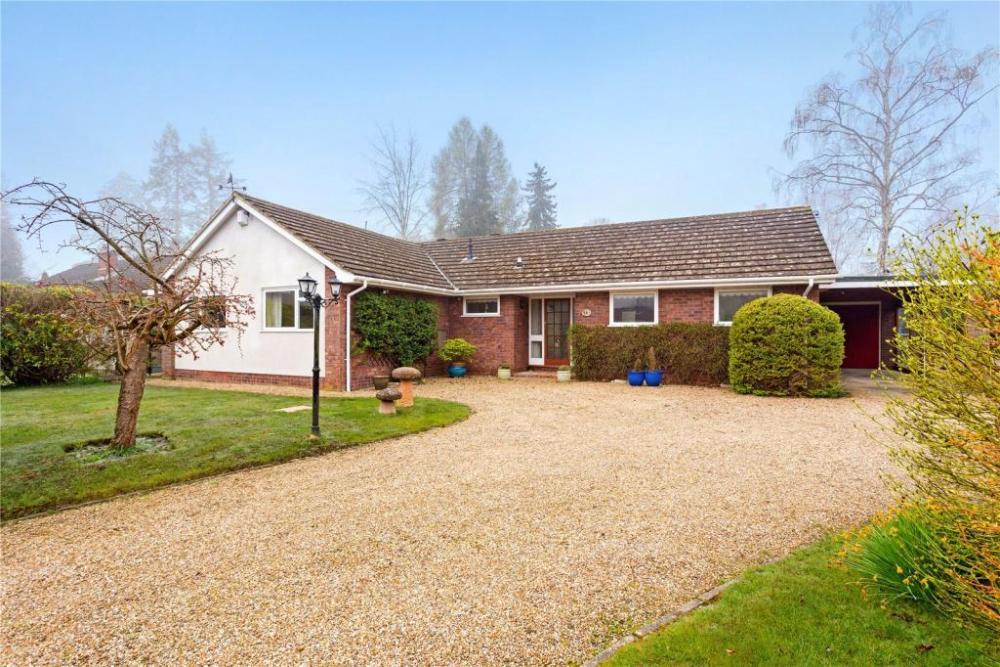
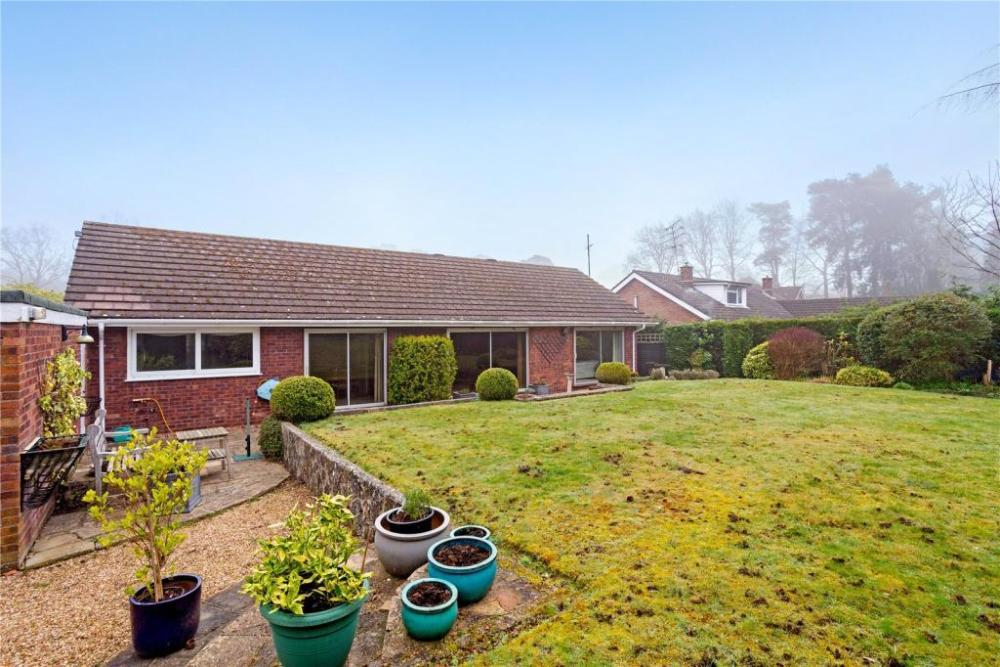
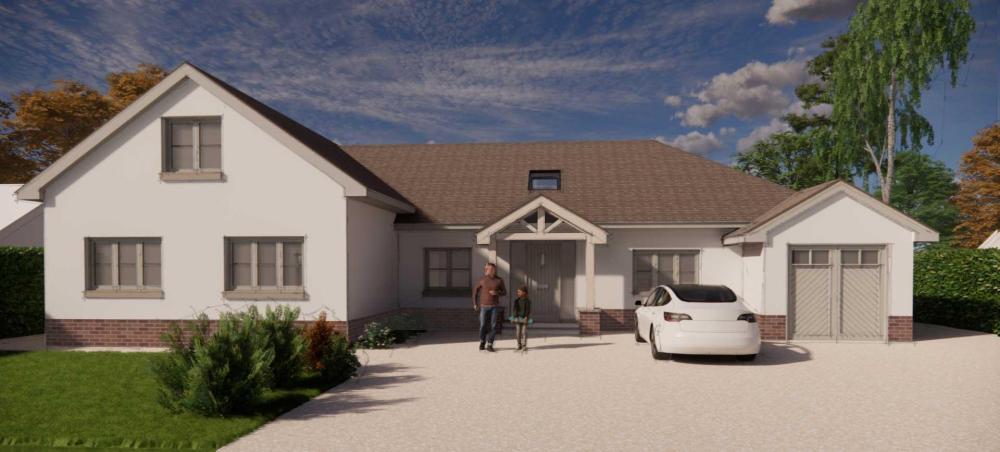

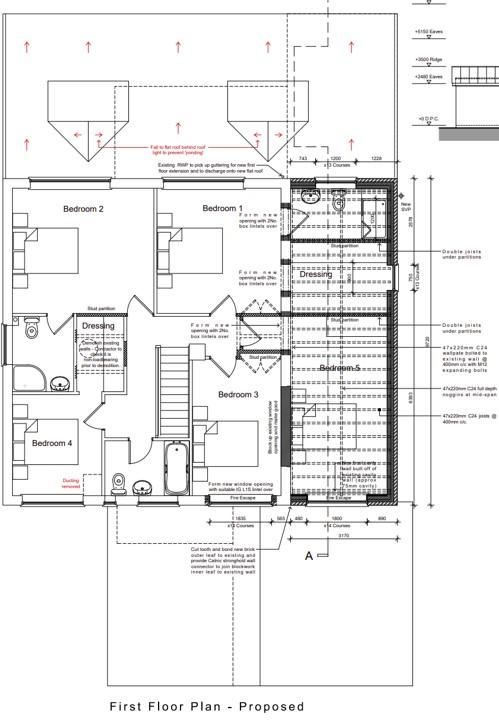
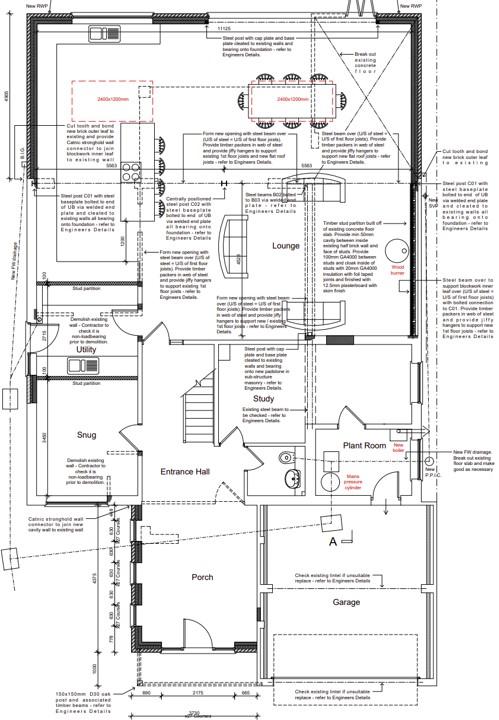


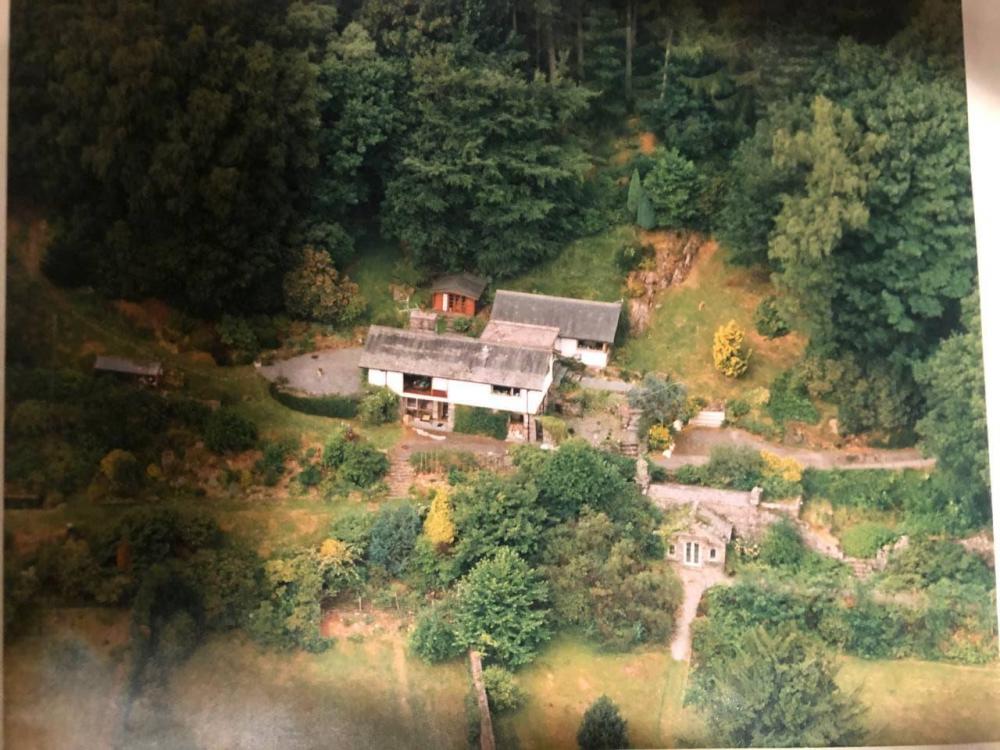
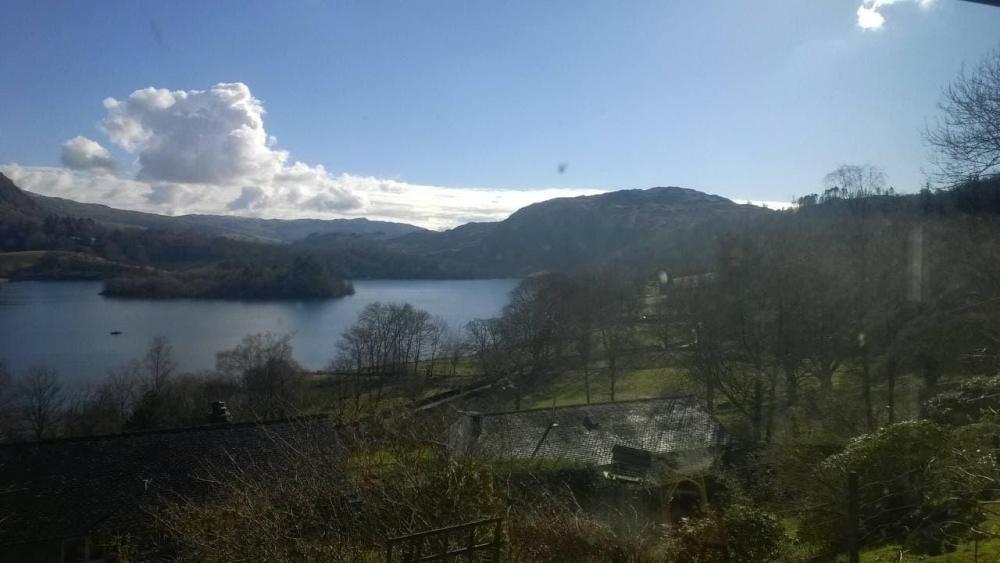
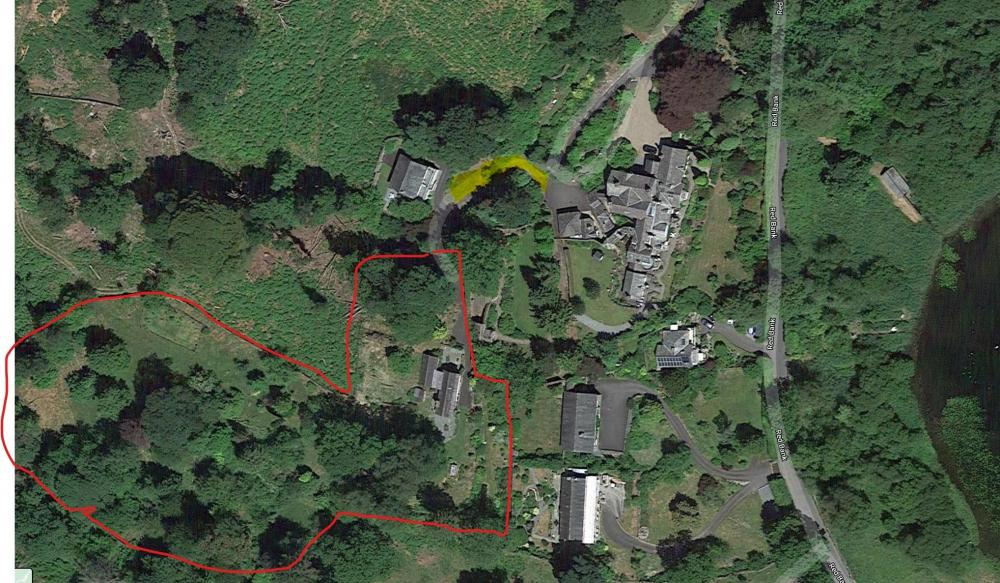

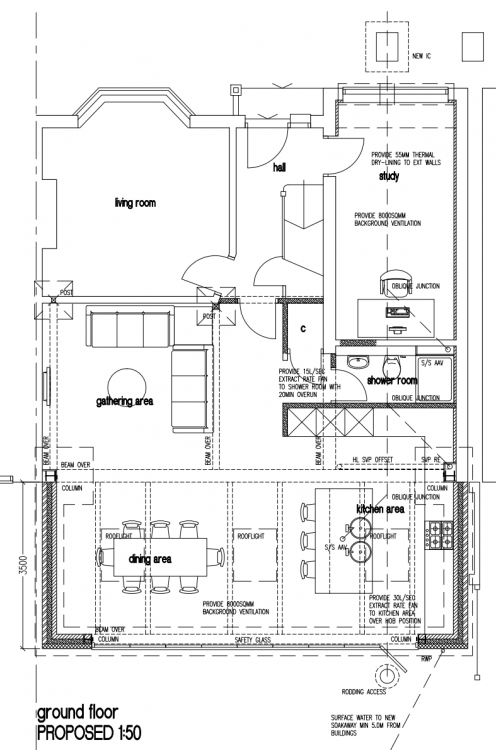
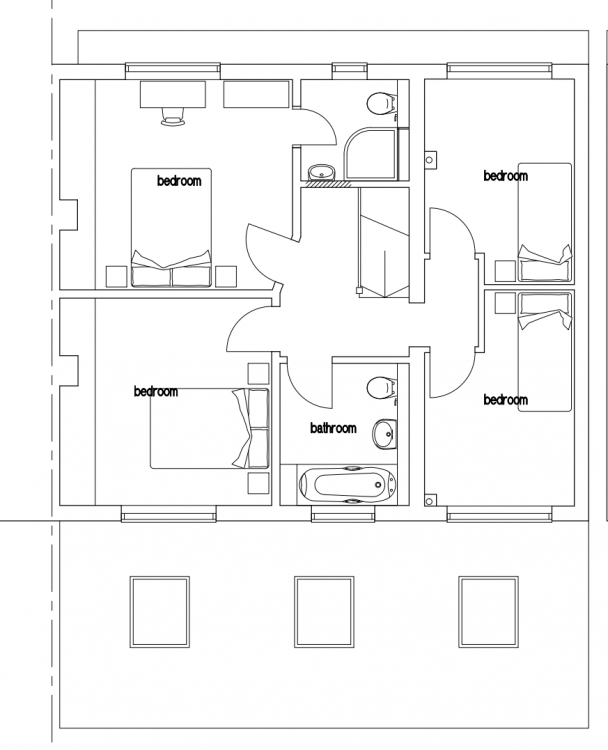
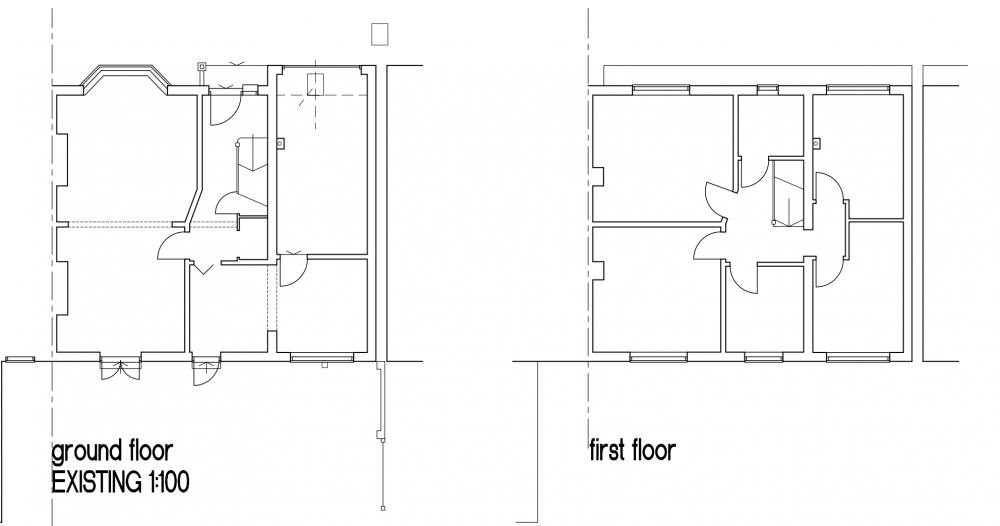
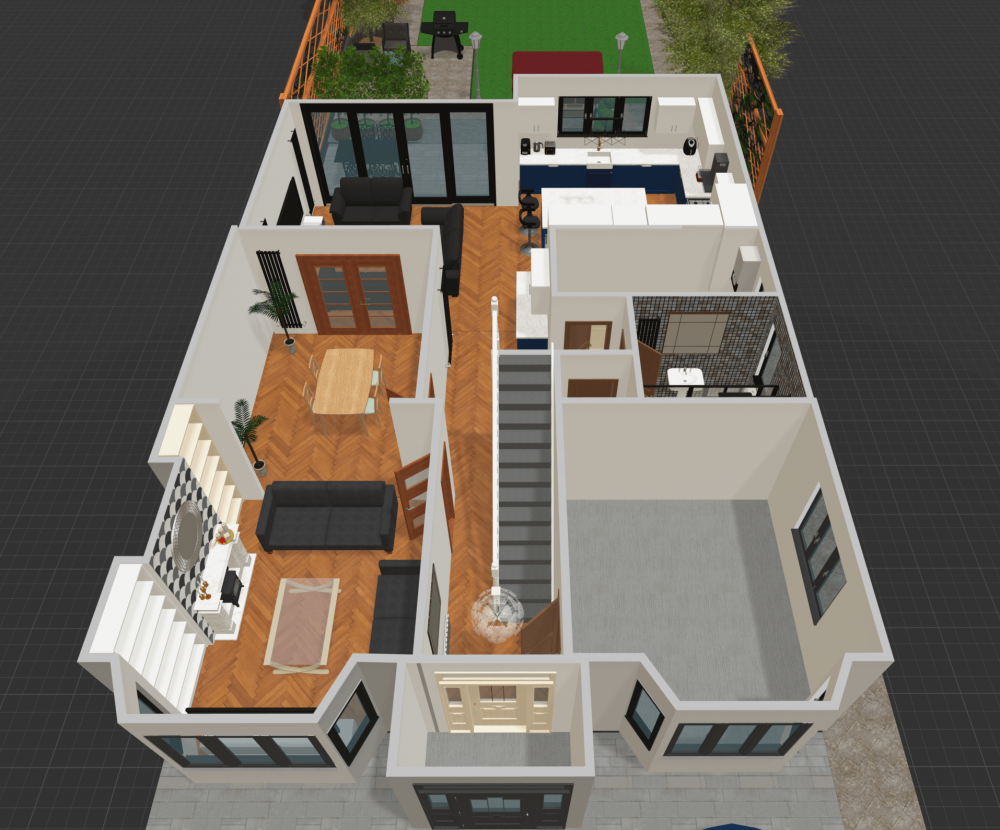

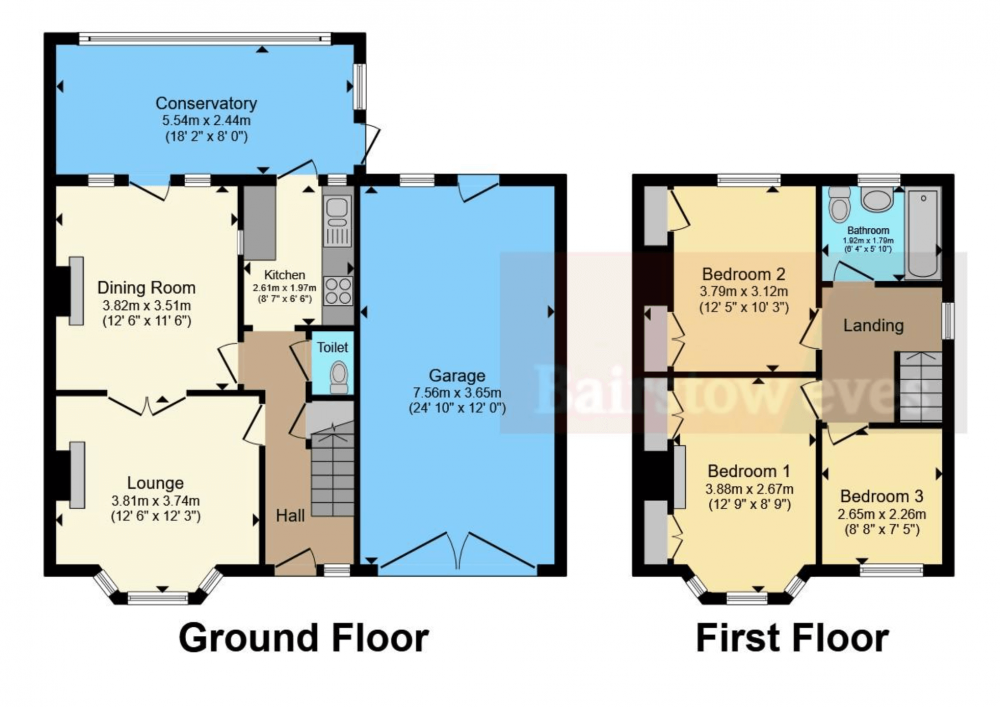
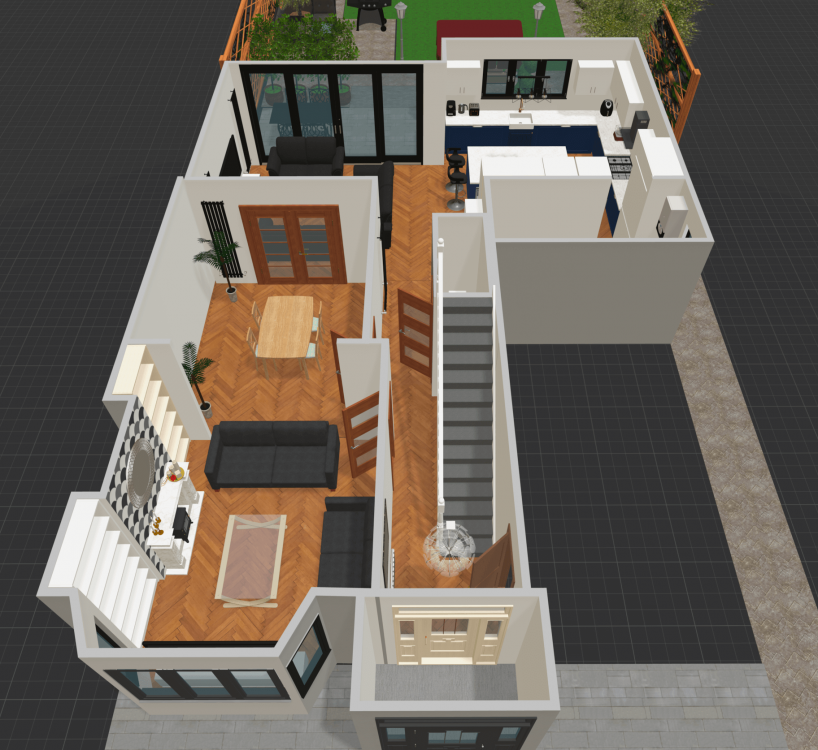
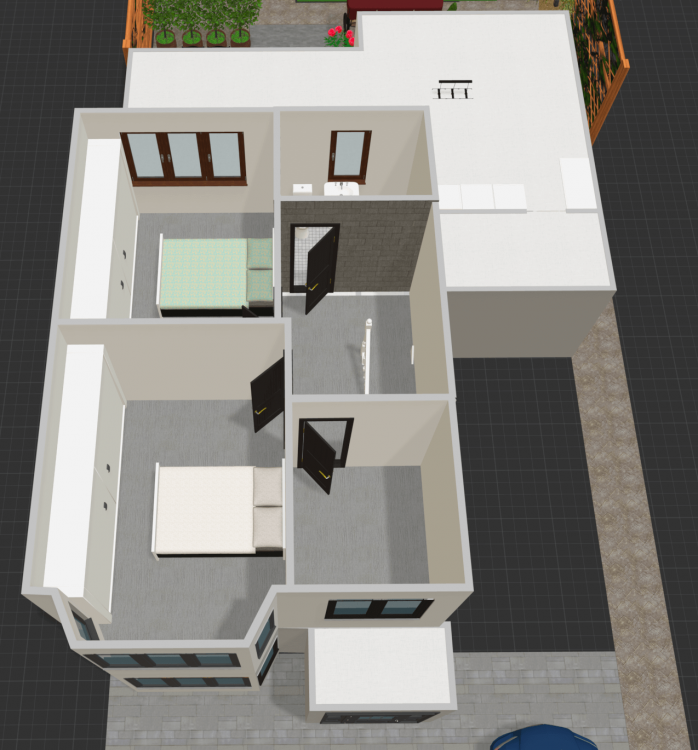



.thumb.jpeg.417a783f83ae0572e9a54416f52e9cd7.jpeg)
.thumb.jpeg.30889057888d2b9d50869e4fedd5fe3f.jpeg)

